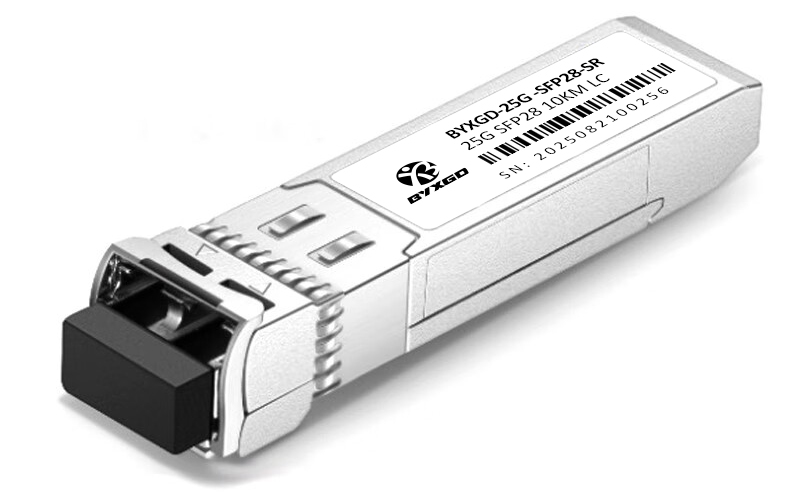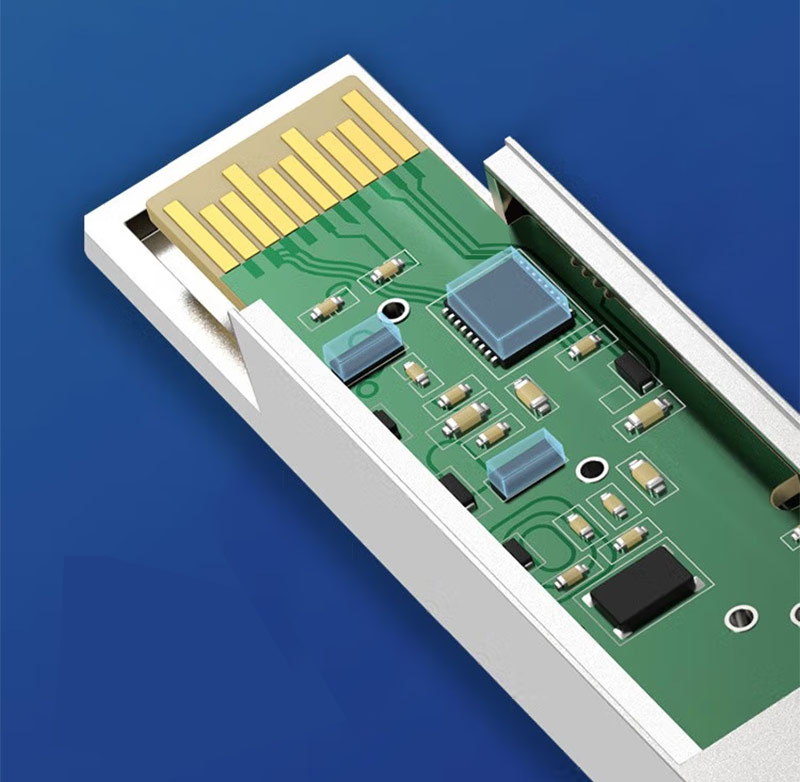Finding it increasingly difficult to manage the rapid data growth you are experiencing in your data center or your 5G fronthaul network? With increasing demand for bandwidth, deciding the right 25G SFP28 modules is paramount in maintaining agility, efficiency, and future scalability in your network. 25G SFP28 transceivers are compact devices that provide next-generation Ethernet performance, exceeding previous performance of 10G modules without replacing your entire infrastructure. As you explore the expansive 25G SFP28 ecosystem and understand the key factors for selecting the modules, you will feel empowered to apply the necessary changes to your network.
This guide will provide the essentials regarding module types, deployment options, and compatibility to initiate smart and cost-effective decisions for high-speed connectivity.
SFP28 Modules For Sale
Categories of 25G SFP28 Modules
Others
What Are 25G SFP28 Modules and Why Are They the Core of Next-Generation Networks?
The 25G SFP28 modules are small optical transceivers built for supporting 25 Gigabit Ethernet networks. They are the often unseen workhorses behind fast data transfers for many 5G fronthaul, data center, and other high-throughput networks. 25G SFP28 transceivers build upon the popular SFP+ form factor of 10G modules, delivering more than double the throughput in the same compact form.
In fact, the 25G SFP28 modules deliver a dramatic increase in speed versus their equivalent 10G modules, without the size or power-hungry requirements of larger devices. The SFP28 modules are an ideal fit for high-performance networks where a network may need to scale but keep the size and power footprint as low as possible.
Think of a 25G SFP28 like an upgraded highway lane, capable of carrying more traffic without needing to build a larger road. 25G SFP28 modules enable network providers to meet increasing data capacity, often with little disruption or additional footprint.
Moreover, strategically speaking, these modules are necessary to enable the next-generation network, where 25G Ethernet, SFP28 is the stepping stone to achieve even greater speeds including 50G and 100G. Deploying 25G SFP28 will ensure that a provider is ready for the future and enable smooth transitions as network needs evolve.
Advantages of 25G SFP28 Modules
- Higher bandwidth capacity than 10G SFP+ in similar form factor sizes
- Lower power requirements than larger multi-lane modules
- Keep network upgrades less complex by utilizing existing ports with proper support
- Support the wider demands of data centers and 5G fronthaul networks
With 25G SFP28 modules, clients have a layer of product agility, efficiency, and speed that has become the core enabler for evolving networks, providing scalability without the complexity of significantly altering existing infrastructure.
25G SFP28 Module Ecosystem: Explore Specialized Categories to Quickly Find Your Solution
The wide selection of 25G SFP28 modules can be tricky to traverse, but knowing the main categories will simplify your options as you delve into 25G SFP28. The 25G SFP28 universe offers standard short-range modules, fiber-saving bifurcated options, wavelength division multiplexing types, and adapters that connect various form factors. Each satisfies different network requirements, making it straightforward to apply solutions to your structure.
Standard 25G SFP28 (SR/LR)
Standard 25G SFP28 modules are typically offered in two flavors: SR (Short Reach) or LR (Long Reach). SR modules are typically designed for data center applications over multimode fiber and reach standard distances of 100m or less. LR modules are designed to reach distances of several kilometers and would be utilized in instances of longer fiber runs either within a campus or in a metro network.
Both module types are housed in a compact footprint while still being reliable and high-speed. These were previously the predominant modules for data centers looking to make a connection without dealing with more complicated fiber management.
Fiber-Saving 25G BiDi SFP28
The familiar 25G BiDi SFP28 modules were designed with a fiber-saving approach of transmitting and receiving data over a single optic fiber. The inherent fiber-saving approach already cuts your fiber in half, thus reducing hard costs and simplifying cable management.
The use of two different wavelengths enables the 25G BiDi modules to easily connect communication over a single fiber. These types of modules are ideal for tightly packed data centers or deployment scenarios when fiber is limited.
Wavelength Division Multiplexing: 25G CWDM/DWDM/LWDM SFP28
Wavelength Division Multiplexing (WDM) methods greatly increase fiber capacity to transmit multiple wavelengths over a single fiber. The 25G CWDM, DWDM, and LWDM SFP28 modules allow channel expansion without adding additional fiber strands.
- 25G CWDM SFP28 modules offer a cost-effective method of multiplexing wavelengths with wider channel spacing that suits metro and campus networks.
- 25G DWDM SFP28 modules occupy tighter wavelength bands and, therefore, provide channels within the spectrum of distance needed for long-haul, high-capacity links.
- 25G LWDM SFP28 modules offer an increase in channel density, optimized for easy deployment while providing a balance between performance and cost.
These 25G SFP28 modules provide a way to maximize the efficiency of fiber resources while scaling network capacity.
QSFP28 to SFP28 Adapter: CVR-QSFP28-SFP25G
The CVR-QSFP28-SFP25G adapter enables the use of QSFP28 ports with SFP28 transceivers, offering backward compatibility and the potential to utilize existing 25G infrastructure. A handy device, the adapter provides a flexible upgrade path for networks, smoothly transitions from high-density switches to low-density switches, and saves the expense of replacing a high-density chassis.
By converting the QSFP28 ports to SFP28, network administrators can add versatility to their existing module library, repurposing existing modules while expanding port options.
This brief overview of the ecosystem shows how different types of specialized 25G SFP28 modules serve different purposes: straightforward short-range links, wavelength multiplexing, and an easy-to-use adapter. Each type serves as a solution to unique challenges to connect smarter and scale faster.
 25G SFP28 Selection Decision: Avoiding Own-pass Strategies and Choosing Wisely
25G SFP28 Selection Decision: Avoiding Own-pass Strategies and Choosing Wisely
Finding the right 25G SFP28 module can be approached with similar principles as looking for the right tool in a toolbox; you must take into consideration the specific job to avoid poor or costly decisions. There are four principles that can help in selecting long-haul SFP28 modules successfully: transmission distance, fiber type, budget, and network topology.
Transmission distance drives the type of module needed. Short-range connections within the confines of a data center may utilize an SFP28 SR on short distances, whereas connections that last kilometers on a campus-wide footprint will require SFP28 LR or WDM modules to maintain signal integrity.
Fiber type contributes to loss and module selection. Simple multimode fiber may suit even short runs when considering the cost and the distance, whereas single-mode fiber may serve at longer distances, but any long-distance module will require a different type of SFP28 transceiver.
No matter the purpose, operating within a budget will play into the decision of whether to buy a premium OEM module or a third-party option. Ultimately, there is the balance of cost and reliability that will also shape the intent of longer-term inherent resilience and less expense.
Network design must also be a factor for future upgrades and scaling. Choosing modules that support your design will help avoid upgrades in a number of modules and the cost that might be incurred.
By relying on these four principles and reducing the complexity of using complicated vendor compatibility tables and focusing on high-level principles, you can reduce the complexity of 25G SFP28 module selection. Taking a step back to apply this thinking allows for an efficient, cost-smart, and scalable network-designed future.
Summary of Highest Considerations:
- Find module type based on required transmission distance module definition.
- Choose type of module fiber type (single-mode vs. multimode).
- Factor budget mindful of reliability.
- Consider network topology with future plans.
The right and thoughtful selection of 25G SFP28 will allow optimal network performance and return on investment.
25G LWDM SFP28 vs CWDM vs DWDM SFP28 vs Standard 25G SFP28: Definitive Comparison and Selection Advice
When choosing the right 25G SFP28 technology, you can think of it as buying a motor vehicle: each has its own advantages and optimal use cases. LWDM, CWDM, DWDM, and standard 25G SFP28 modules have distinct differences in cost, distance, channel capacity, complexity, and maintenance requirements, all of which affect network design decisions.
To help visualize this comparison, the table below provides a side-by-side evaluation of these fundamental component technologies:
| Feature | Standard 25G SFP28 | CWDM 25G SFP28 | DWDM 25G SFP28 | LWDM 25G SFP28 |
| Cost | Low to moderate | Moderate | High | Moderate |
| Transmission Distance | Up to 10 km | 10-40 km | 40-80+ km | 40-80 km |
| Channel Count | Single channel per fiber | ~8 channels (wide spacing) | 40+ channels (dense spacing) | 8-12 channels |
| Complexity | Low | Medium | High | Medium |
| Maintenance Overhead | Low | Medium | High | Medium |
Standard 25G SFP28 modules are best utilized for short reach purposes, in a data center or campus network, from which you simply want a cost-effective and relatively simple connection. However, when a more practical medium-type connection is required in many channels across longer reaches, you would consider CWDM.
Used in metropolitan and enterprise networks, CWDM allows cost-effective increases in channel density while optimizing and extending reach due to its wider channel spacing than the other options. Lastly, if you’re really looking for a connection with the highest density and long-haul use, 25G SFP28 DWDM modules, by design, will support the most narrow wavelengths while using those wavelengths across multiple channels to achieve the highest capacity.
Depending on the application, this could simply lead to faster speeds, or it could be intended for scaling across many channels. The added complexity and cost of going with DWDM are only justified if a long-haul backbone with a high number of channels and subsequent highest density is a requirement for a data center or campus link.
LWDM modules are your best balance between added distance and channel count in either CWDM or DWDM (at potentially less complexity and lower cost). They offer a good middle ground for networks looking to improve capacity while avoiding the overhead of DWDM. Each application has its ideal deployment, and the multiple solutions to meet those applications allow for flexibility.

Scenario-Based Recommendations
- Standard 25G SFP28 modules are your best fit in deployment for short data center links with basic needs.
- In other cases where you are limited in fiber resources and need moderate extension, CWDM modules will fit the bill.
- If you require high-capacity long-haul backbones that demand many channels, while accepting the improved complexity, then you would go to the DWDM option.
- If you require a cost-effective method to increase channel counts or distance, while avoiding the increased complexity, then the LWDM option is your best technological option.
The above table and scenario-based advice can allow network planners the technical operational insight they need to evaluate conditions that meet their budget, performance needs, and operational capacity. If you are looking for the best fit, you can also consider the variation in the medium type as different vehicles designed to traverse different terrains and distances in your network journey. In this case, the “best” 25G SFP28 technology is the one that serves the unique journey of your needs.

 25G SFP28 Selection Decision: Avoiding Own-pass Strategies and Choosing Wisely
25G SFP28 Selection Decision: Avoiding Own-pass Strategies and Choosing Wisely